Raul Ruiz was a Chilean filmmaker known for his avant-garde and experimental approach to cinema. He made over 100 films throughout his career, exploring a wide range of genres, styles, and themes. Here are some of his most acclaimed films:
“Time Regained” (1999): Based on Marcel Proust’s monumental novel “In Search of Lost Time,” this film is a dreamlike exploration of memory and time.
It features a star-studded cast and a stunning visual style that captures the spirit of Proust’s literary masterpiece.
“Mysteries of Lisbon” (2010): This epic film is based on the novel by Portuguese author Camilo Castelo Branco, and tells the story of a young orphan’s journey to discover the secrets of his past.
The film is a sprawling historical drama that is marked by its elaborate visual style and complex narrative structure.
“Three Lives and Only One Death” (1996): This black comedy is a surreal and absurdist exploration of identity and mortality.
It features the late Marcello Mastroianni in his final film role, and showcases Ruiz’s unique visual style and playful approach to storytelling.
“The Hypothesis of the Stolen Painting” (1978): This film is a mind-bending exploration of art, perception, and reality.
It tells the story of a detective who becomes obsessed with a painting that he believes has been stolen and replaced with a fake.
The film is marked by its nonlinear narrative structure and its imaginative approach to storytelling.
“City of Pirates” (1983): This film is a surreal and dreamlike exploration of childhood, imagination, and desire.
It tells the story of a young girl who becomes caught up in a world of pirates and other fantastical creatures.
The film is marked by its stunning visual style and its evocative portrayal of the inner world of the imagination.
Best Raul Ruiz Films
These films are just a few examples of Ruiz’s diverse and imaginative body of work.
Each film showcases his unique approach to storytelling and his ability to create complex and thought-provoking narratives.
1. Mysteries of Lisbon (2011)
“Mysteries of Lisbon” is a 2011 drama film directed by Raúl Ruiz, based on the novel of the same name by Portuguese author Camilo Castelo Branco.
The movie tells the story of a young orphan named João, who embarks on a journey to uncover the secrets of his past and discover the truth about his identity.
As João delves into his past, he encounters a cast of complex and mysterious characters, including a wealthy countess, a priest, a gypsy, and a criminal.
Their stories intertwine in unexpected ways, revealing a complex web of love, betrayal, and deceit.
If you like Raul Ruiz’s work, on our sister site AuteurGraph we have a profile page, a visual film timeline, and a ratings page that gives a tonne of info and data about their career in a visualized form.
The film is notable for its stunning cinematography, intricate storytelling, and outstanding performances from the entire cast.
It is a sweeping and epic tale that spans multiple generations, exploring themes of love, desire, and the search for personal identity.
“Mysteries of Lisbon” is a rich and immersive cinematic experience that will transport you to another time and place.
It is a film that rewards patience and attention to detail, as the story slowly unfolds and the mysteries are revealed. If you are a fan of epic storytelling and intricate narratives, “Mysteries of Lisbon” is a must-see film.
- Factory sealed DVD
- Adriano Luz, Maria Joao Bastos, Ricardo Pereira (Actors)
- Raul Ruiz (Director)
- English (Playback Language)
- English (Subtitle)
2. The Hypothesis of the Stolen Painting (1978)
“The Hypothesis of the Stolen Painting” is a French film directed by Raúl Ruiz and released in 1978.
The film is a playful and inventive exploration of the nature of art, perception, and reality, as well as a tribute to the surrealist movement.
The film follows a narrator, played by Jean Rougeul, who takes the audience on a journey through various artworks, offering his own interpretations and insights into their meaning and significance.
Along the way, the film weaves together a series of seemingly disconnected narratives, including the story of a stolen painting and the investigation into its disappearance.
“The Hypothesis of the Stolen Painting” is known for its inventive visual style and its use of unconventional narrative techniques, such as the use of multiple narrators and the blurring of the boundaries between reality and fiction.
The film is often playful and surreal, with a sense of humor and a self-referential quality that invites the audience to engage with its themes in a creative and thoughtful way.
Overall, “The Hypothesis of the Stolen Painting” is a fascinating and thought-provoking film that explores complex themes of art, perception, and reality.
It is a must-see for fans of surrealist and experimental cinema, as well as anyone interested in the nature of art and creativity.
3. City of Pirates (1983)

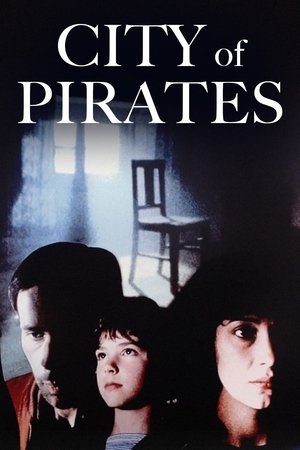
City of Pirates
1984 • 1h 48min • ★ 7.2/10 • France
Directed by: Raúl Ruiz
Cast: Hugues Quester, Anne Alvaro, Melvil Poupaud, André Engel, João Bénard da Costa
A surreal odyssey in which a melancholic maidservant crosses paths with a homicidal little boy, travels to a tiny island of pirates and encounters a man with multiple personalities.
“City of Pirates” (French: La ville des pirates) is a 1983 French fantasy film directed by Raúl Ruiz. The film is known for its surreal, dreamlike narrative and visual style.
The story follows a young girl named Isidore, who is searching for her lost father in a strange, mystical world that is full of pirates, ghosts, and other mysterious characters.
Along the way, she encounters a series of bizarre and surreal situations that blur the line between reality and fantasy.
https://www.youtube.com/watch?v=W_Vy6eGccEU
The film is notable for its unconventional narrative structure and use of non-linear storytelling. It is often interpreted as a meditation on memory, identity, and the subconscious mind.
The film’s dreamlike visuals and symbolic imagery have also drawn comparisons to the works of surrealist artists such as Salvador Dalí and René Magritte.
“City of Pirates” received critical acclaim upon its release and is considered one of Raúl Ruiz’s most significant films.
It has since become a cult classic among fans of surreal and experimental cinema.
No products found.
4. Manuel on the Island of Wonders (1984)
No poster available
“Manuel on the Island of Wonders” is a Brazilian avant-garde film directed by Raúl Ruiz and released in 1984.
The film is a surreal and dreamlike exploration of childhood, memory, and identity, and it is considered one of Ruiz’s most significant works.
The film tells the story of a young boy named Manuel, who lives on an island in the middle of a river. Manuel’s mother has disappeared, and he is left to navigate the strange and sometimes frightening world around him.
Along the way, he meets a series of eccentric characters who help him on his journey, including a magician, a witch, and a group of singing children..
https://www.youtube.com/watch?v=jUn4YaSC4i4
One of the most striking aspects of “Manuel on the Island of Wonders” is its highly stylized visual style, which uses a range of experimental techniques, such as multiple exposures, superimpositions, and unusual camera angles, to create a dreamlike and otherworldly atmosphere.
The film also features a rich and complex soundtrack, which incorporates a variety of sounds, including traditional Brazilian music and ambient noise.
Overall, “Manuel on the Island of Wonders” is a rich and imaginative work of art that challenges conventional notions of narrative and meaning.
It is a film that rewards close attention and invites viewers to immerse themselves in its surreal and fantastical world.
5. Klimt (2006)
“Klimt” is a biographical drama film directed by Raúl Ruiz and released in 2006. The film tells the story of the Austrian painter Gustav Klimt, who is known for his innovative and controversial approach to art.
The film focuses on a period in Klimt’s life when he was commissioned to paint a portrait of a wealthy woman named Adele Bloch-Bauer.
The film explores Klimt’s creative process and his relationship with Bloch-Bauer, who became a muse and a source of inspiration for him.
One of the most striking aspects of “Klimt” is its visual style, which is marked by a series of imaginative and stylized tableaux that evoke the world of Klimt’s art.
The film features a rich and complex soundtrack, which incorporates a variety of sounds and musical styles, including traditional Austrian music and contemporary electronica.
Overall, “Klimt” is a visually stunning and emotionally rich film that offers a unique perspective on the life and work of one of the most influential artists of the 20th century.
It is a film that explores the complex relationship between art and life, and invites viewers to reflect on the nature of creativity and the role of the artist in society.
6. Three Crowns of the Sailor (1983)
“Three Crowns of the Sailor” is a 1983 film directed by French filmmaker Raúl Ruiz. The movie follows the story of a sailor named Gaspard (played by Jean-Bernard Guillard) who tells the story of his adventures to a group of people on a ship.
The stories he tells are full of magical realism and surreal imagery, and they blend together in a dreamlike narrative that explores themes of identity, memory, and the nature of storytelling.
The film is notable for its avant-garde style, incorporating elements of surrealism and magic realism.
It also features a talented ensemble cast, including Philippe Deplanche, Nadège Clair, and Anne Gautier, who bring their own unique energy and flair to the story.
“Three Crowns of the Sailor” is a captivating and thought-provoking film that challenges the viewer’s expectations and blurs the boundaries between reality and fantasy.
It is a film that rewards multiple viewings, as the intricate narrative unfolds in unexpected ways with each viewing.
If you are a fan of experimental cinema and avant-garde storytelling, “Three Crowns of the Sailor” is a must-see film.
- Factory sealed DVD
- Jean-Bernard Guillard, Philippe Deplanche, Jean Badin (Actors)
- Raoul Ruiz (Director) - Emilio Del Solar (Writer)
- English (Subtitle)
- English (Publication Language)
7. The Territory (1981)

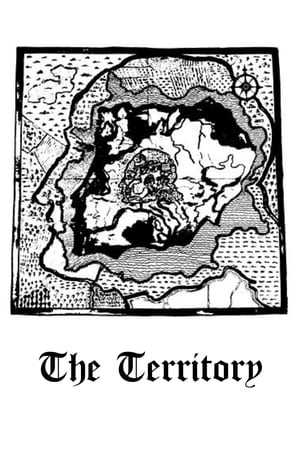
The Territory
1981 • 1h 44min • ★ 5.8/10 • Portugal
Directed by: Raúl Ruiz
Cast: Geoffrey Carey, Paul Getty Jr., Jeffrey Kime, Rebecca Pauly, Isabelle Weingarten
A small group of well-to-do vacationers go on a hiking trip into the woods. Foolishly unprepared to deal with Mother Nature and their situation, they wander around lost for days and weeks, becoming more and more fatigued, hungry, and desperate. A brief encounter with a pair of epicureans on a bridge fails to garner them any of the gluttons' feast due to a language barrier. Eventually their party begins to die, and the survivors ration their meat among them, attaching a religious-type ritual to its dispensation.
“The Territory” (also known as “Il territorio”) is a 1981 film directed by Italian filmmaker Sergio Rubini.
The film is a comedy-drama set in a small town in Southern Italy, following the lives of a group of eccentric characters as they go about their daily lives.
The film is notable for its exploration of themes of identity, community, and tradition, and its portrayal of the contrasts and tensions between urban and rural life in Italy.
“The Territory” features a cast of acclaimed Italian actors, including Rubini himself, Marcello Mastroianni, and Michele Placido.
The film received critical acclaim upon its release and has been praised for its satirical humor and insightful social commentary.
It offers a unique and nuanced perspective on the complexities of Italian culture and society, and is a must-see for anyone interested in Italian cinema or culture.
8. On Top of the Whale (1982)

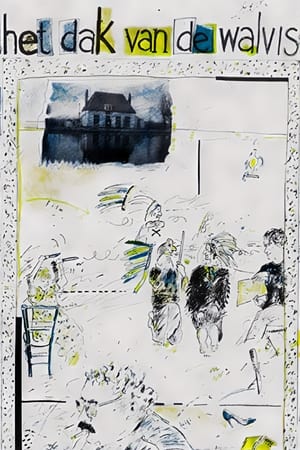
On Top of the Whale
1982 • 1h 37min • ★ 7/10 • Netherlands
Directed by: Raúl Ruiz
Cast: Willeke van Ammelrooy, Jean Badin, Fernando Bordeu, Herbert Curiel, Amber De Grau
A parody of anthropology, linguistics, and cultural imperialism. The film follows an unlikely team of linguists into the wilds of an ersatz Patagonia to study the last speakers of a dying language. That language apparently consists of a single word, which therefore means everything.
“On Top of the Whale” is an Argentine film directed by Raúl Ruiz and released in 1982. The film is a surreal and allegorical exploration of the political turmoil and social upheaval of 1970s Argentina, a period marked by violence, repression, and censorship.
The film tells the story of a group of individuals who find themselves stranded on an island that is slowly sinking into the sea.
As they struggle to survive and come to terms with their uncertain fate, they are forced to confront the complex political and social realities of their country.
“On Top of the Whale” is known for its surreal and dreamlike visual style, as well as its use of allegory and metaphor to explore complex political themes.
The film is often playful and experimental, with a sense of humor and a willingness to push the boundaries of conventional narrative and storytelling.
Overall, “On Top of the Whale” is a fascinating and thought-provoking film that offers a unique and powerful commentary on the political and social realities of Argentina in the 1970s.
It is a must-see for fans of surrealist and experimental cinema, as well as anyone interested in the intersections of politics and art.
9. Snakes and Ladders (1980 TV Movie)
“Snakes and Ladders” is a 1980 British television movie directed by Michael Lindsay-Hogg and written by Alan Ayckbourn.
The movie is a dark comedy that explores the lives of two dysfunctional couples who are playing a board game, which serves as a metaphor for their relationships and their struggles with power dynamics, infidelity, and betrayal.
The cast includes a number of well-known British actors, including Joss Ackland, Susan Fleetwood, and Tim Pigott-Smith.
The movie received mixed reviews from critics, with some praising the sharp dialogue and the strong performances by the cast, while others found the movie too dark and depressing.
“Snakes and Ladders” was produced by the BBC and was originally broadcast on television in the United Kingdom.
It has since been released on DVD and is available for streaming on various online platforms.
- Audio CD – Audiobook
- Rev-Ola/Cherry Red (Publisher)
10. Ombres chinoises (1982)
“Ombres chinoises” is a French drama film released in 1983, directed by Michelangelo Antonioni and Wim Wenders.
The film is also known as “Les Scénarios de Michelangelo Antonioni” and “Beyond the Clouds”.
The film consists of four separate stories, each exploring themes of love, desire, and human relationships.
The segments are loosely connected by a framing story that follows a filmmaker (played by John Malkovich) as he travels through Europe in search of new ideas for his next film.
The individual segments are directed by both Antonioni and Wenders, with the two directors collaborating on the framing story.
The film features an international cast that includes actors such as Malkovich, Sophie Marceau, Fanny Ardant, and Peter Weller.
It was praised for its visually stunning cinematography and its exploration of human emotions and relationships.
The film was also noted for its innovative use of multiple directors and its blending of different languages and cultural traditions.
Despite mixed reviews upon its release, “Ombres chinoises” has since become a cult classic and is regarded as an important work in the careers of both Antonioni and Wenders.
- Eudel, Paul (Author)
- French (Publication Language)
- 346 Pages - 06/01/2013 (Publication Date) - Hachette Livre Bnf (Publisher)
11. The Film to Come (1997)
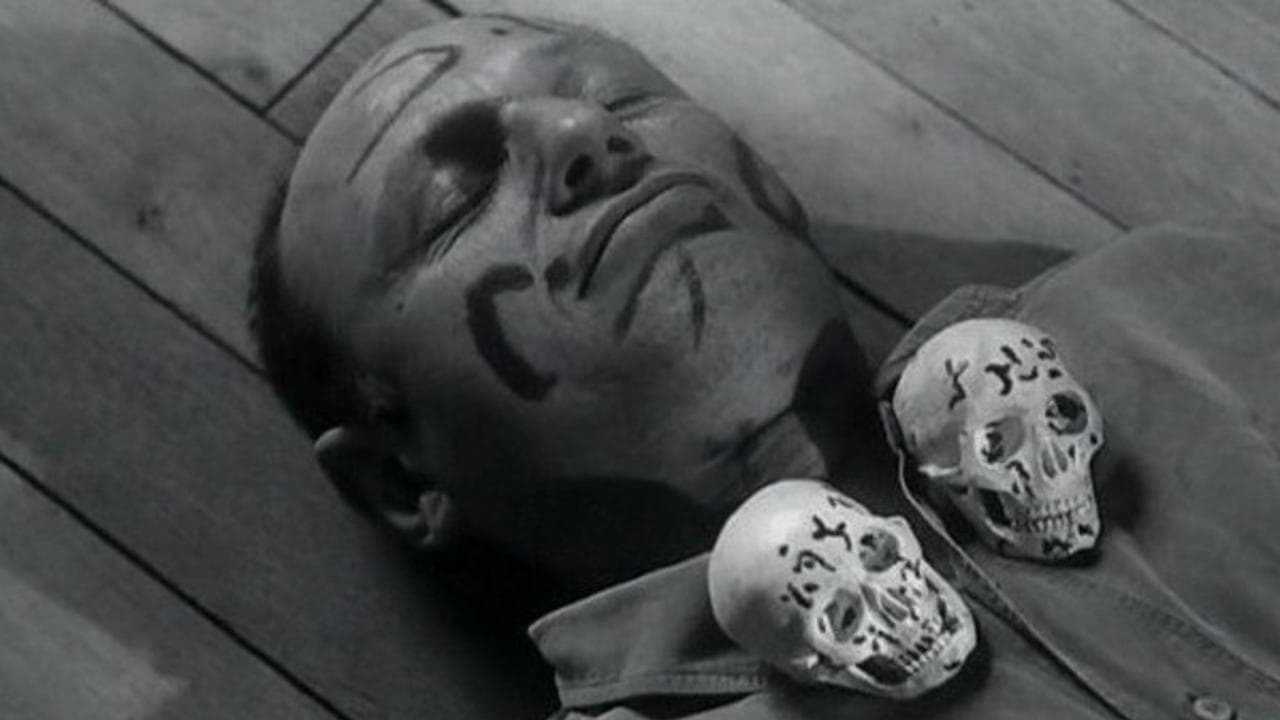
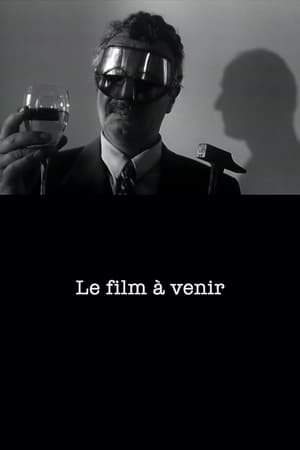
The Film to Come
1997 • 0h 9min • ★ 6.3/10 • France
Directed by: Raúl Ruiz
If any single piece can act as a key to Ruiz, it may be the 1997 short Le Film à Venir (The Film to Come). The titular film is a holy fragment of celluloid that can only be seen by a secret society known as the Philokinetes. They watch it on a loop, somnambulating through a life that is unreal by comparison. It is the belief of the Philokinetes that film has an existence “independent from humans. Cinema, they said, is the primeval soup of a new life form. There from were to emerge pure screening creatures. Which is to say, non-topical beings.” - n+1
“The Film to Come” (Le Film à Venir) is a 1997 French film directed by French director and film theorist, Raúl Ruiz.
The film is a meditation on the nature of cinema and its relationship to memory, imagination, and reality.
The film consists of a series of episodes that explore different aspects of the cinematic experience.
Some of the episodes feature actors playing out scenes, while others are more abstract and experimental in nature.
Throughout the film, Ruiz challenges traditional notions of storytelling and narrative, and instead explores the ways in which cinema can evoke memories, dreams, and fantasies.
One of the most striking aspects of “The Film to Come” is its unconventional visual style, which incorporates a range of experimental techniques, such as superimpositions, dissolves, and double exposures.
The film also features a complex and multilayered soundtrack, which incorporates a variety of sounds and music, including ambient noise, classical music, and snippets of dialogue.
Overall, “The Film to Come” is a challenging and thought-provoking work of art that offers a unique perspective on the nature of cinema and its potential as a medium for exploring the complexities of the human experience.
It is a film that invites viewers to question their assumptions about storytelling and narrative, and to embrace the possibilities of cinema as a form of artistic expression.
12. Las soledades (1992)
“Las soledades” is a Spanish film directed by Jaime Rosales and released in 1992. The film tells the story of a young woman named Ana, who has recently returned to her hometown in Spain after living abroad.
Ana is struggling to come to terms with her own sense of identity and purpose, and the film explores her inner turmoil and isolation as she tries to reconnect with her past.
The film is known for its minimalist and understated visual style, as well as its nuanced and introspective portrayal of its central character.
“Las soledades” is a slow and contemplative film, with a focus on the internal psychological states of its characters rather than on plot or action.
Overall, “Las soledades” is a thoughtful and poignant film that offers a powerful commentary on the nature of identity and the search for meaning in life.
It is a must-see for fans of introspective and character-driven cinema, as well as anyone interested in the complexities of the human experience.
- Hardcover Book
- Esfandiary Bakhtiary Soraya (Author)
- Spanish (Publication Language)
- 01/01/1992 (Publication Date) - Martínez Roca. (Publisher)
13. Image de sable (1981)
No poster available
Image de sable
1981 • 0h 15min • France
Directed by: Raúl Ruiz
Cast: Pieter Wiersma
Ruiz’s short about Pieter Wiersma, a Dutch sculptor who makes intricate sandcastles.
“Image de sable” is a 1981 French drama film directed by Lamine Merbah and starring Tanya Lopert, Anémone, and Pierre Santini.
The film explores the themes of memory, identity, and cultural conflict through the story of a young French woman, played by Tanya Lopert, who returns to Algeria to find out about her origins and reconnect with her past.
The movie was well received by critics, who praised the film’s powerful imagery, striking cinematography, and the strong performances by the cast.
The movie also received recognition at several film festivals, including the Cannes Film Festival, where it was screened in the Director’s Fortnight section.
“Image de sable” is a rare example of Algerian cinema and is considered an important work of North African cinema, offering a nuanced and poignant portrayal of the complex relationship between France and Algeria, as well as the struggles of individuals caught between two cultures.
14. The Suitcase (1963)
“The Suitcase” (French: “La Valise”) is a 1963 French short film directed by Georges Lautner. The film tells the story of a young woman named Marie-Claire, who steals a suitcase full of money from her gangster boyfriend and goes on the run.
The film follows Marie-Claire’s attempts to evade capture and find a way to escape with the money.
Along the way, she encounters a number of eccentric characters, including a taxi driver who helps her flee the city and a lonely sailor who offers her a way out.
“The Suitcase” is notable for its fast-paced, suspenseful storytelling and its use of location shooting to create a gritty, realistic atmosphere.
The film also features a strong performance by actress Mireille Darc in the lead role of Marie-Claire.
Despite its short running time, “The Suitcase” has become a cult classic of French cinema and is often cited as a prime example of the “nouvelle vague” movement of French filmmaking.
It has been praised for its combination of action and suspense with a deep sense of character and emotion, as well as its innovative use of visual storytelling.
3 Characteristics of Raul Ruiz Films
Raúl Ruiz was a Chilean filmmaker known for his unique and experimental approach to cinema. Here are three characteristics of his films:
Surreal and dreamlike imagery: Ruiz’s films often feature surreal and dreamlike imagery, blurring the boundaries between reality and fantasy.
He frequently used techniques such as superimposition, fragmentation, and distortion to create an otherworldly and often unsettling atmosphere.
Non-linear storytelling: Ruiz’s films often employ non-linear storytelling, with fragmented narratives and a complex web of interconnected storylines.
He often played with chronology, shifting back and forth in time and leaving the viewer to piece together the story.
Metafictional elements: Ruiz’s films often contain metafictional elements, blurring the lines between reality and fiction.
He frequently incorporated self-referential elements into his work, such as characters who are aware that they are in a film or scenes that break the fourth wall.
Overall, Ruiz’s films are marked by their experimentation and a willingness to challenge traditional notions of storytelling and narrative.
They offer a rich and complex exploration of the human experience, inviting viewers to question their assumptions and embrace the possibilities of cinema as a form of artistic expression.
3 Reasons Why You Should Watch Raul Ruiz Films
Raúl Ruiz was a Chilean-born filmmaker who was known for his avant-garde and experimental approach to cinema. Here are three reasons why you should watch his films:
Innovative storytelling: Ruiz’s films often feature intricate and unconventional narratives that challenge the viewer’s expectations and blurs the boundaries between reality and fantasy.
He frequently employs elements of magical realism, surrealism, and metafiction to create a unique and thought-provoking cinematic experience.
Visual style: Ruiz was a master of visual storytelling, and his films are often characterized by their stunning cinematography, intricate set designs, and elaborate costuming.
He was known for his use of bold colors, striking camera angles, and dramatic lighting, which helped to create a sense of otherworldliness in his films.
Intellectual depth: Ruiz’s films are often rich with literary and philosophical references, exploring complex themes such as memory, identity, and the nature of reality.
He was a filmmaker who challenged his audience to engage with his films on a deeper intellectual level, and his work continues to inspire and challenge cinephiles around the world.
Overall, Raúl Ruiz was a visionary filmmaker whose work was marked by innovation, creativity, and intellectual depth. His films are a must-see for anyone interested in avant-garde cinema and the art of storytelling.
Best Raul Ruiz Films – Wrapping Up
Raul Ruiz was a prolific Chilean filmmaker who directed more than 100 films over the course of his career. Here are some of his most highly regarded films:
“Time Regained” (1999) – An adaptation of Marcel Proust’s classic novel “In Search of Lost Time,” this film explores themes of memory, time, and art through a complex and surreal narrative.
“Mysteries of Lisbon” (2010) – This epic period drama is an adaptation of a novel by Portuguese author Camilo Castelo Branco, and follows the intersecting lives of several characters over the course of decades in 19th-century Portugal.
“Three Lives and Only One Death” (1996) – This darkly comedic film follows the exploits of a man who reinvents himself with a new identity each time he dies, leaving his former life behind.
“The Hypothesis of the Stolen Painting” (1978) – This playful and cerebral film centers around the search for a stolen painting, and blurs the lines between reality and fiction in a postmodern exploration of the nature of art.
“City of Pirates” (1983) – A dreamlike and surreal film that weaves together multiple narratives in a fantastical and surreal exploration of the power of imagination.
Ruiz’s films are known for their intellectual complexity, playful approach to narrative, and surreal imagery, and are often cited as major influences on contemporary filmmakers.







![KLIMT - VARIOUS [DVD] [2006]](https://m.media-amazon.com/images/I/51pomp3BIcL.jpg)






